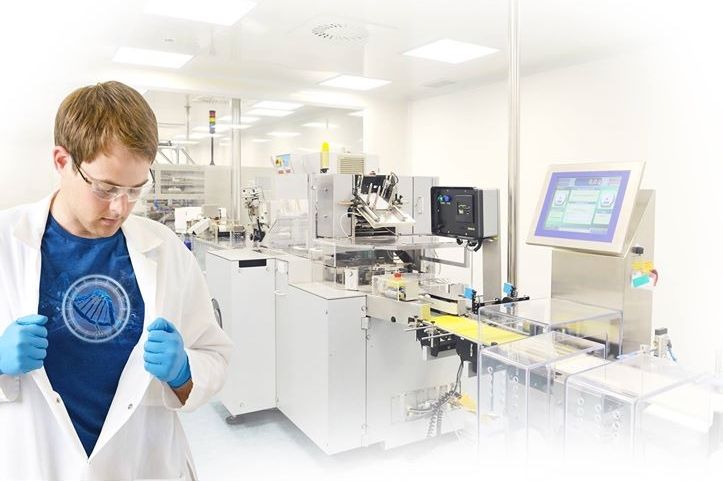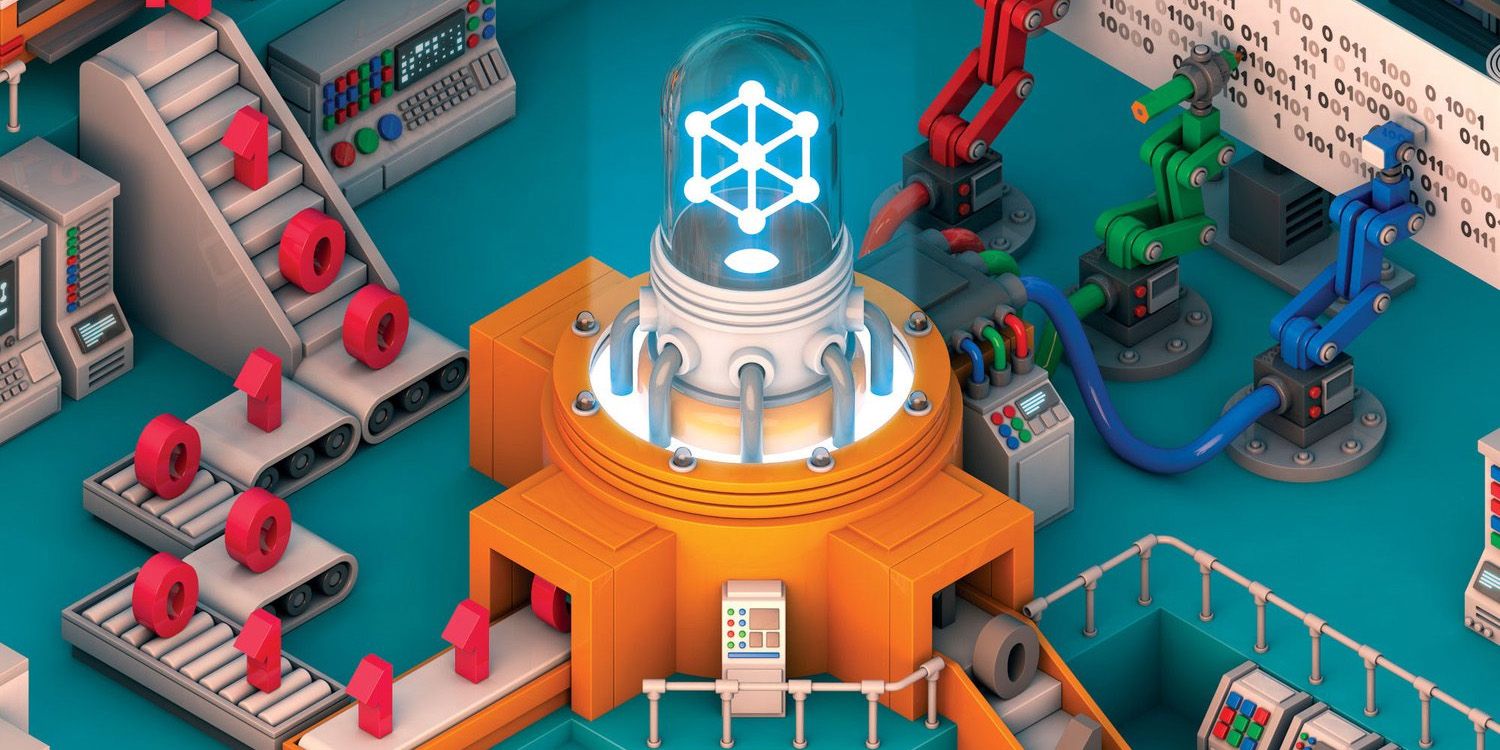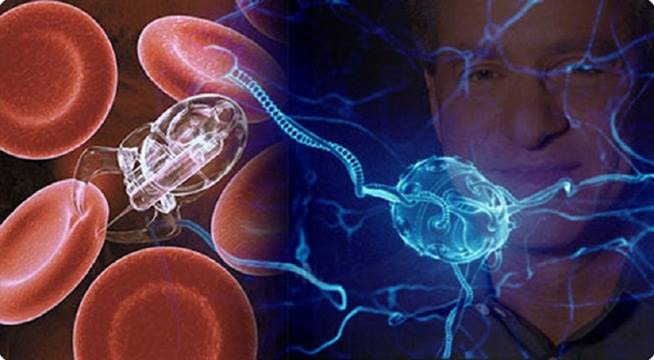Page 10785
Oct 16, 2016
A new spin on superconductivity: Harvard physicists pass spin information through a superconductor
Posted by Karen Hurst in categories: nanotechnology, quantum physics, supercomputing
New method for information storage via QC uncovered.
Abstract: Researchers from the Harvard John A. Paulson School of Engineering and Applied Sciences (SEAS) have made a discovery that could lay the foundation for quantum superconducting devices. Their breakthrough solves one the main challenges to quantum computing: how to transmit spin information through superconducting materials.
Every electronic device — from a supercomputer to a dishwasher — works by controlling the flow of charged electrons. But electrons can carry so much more information than just charge; electrons also spin, like a gyroscope on axis.
Oct 16, 2016
There’s a way to turn almost any object into a computer – and it’s causing shockwaves in the science community
Posted by Karen Hurst in categories: computing, science, singularity
Oct 16, 2016
Cognitive Scale – Cognitive Computing in The Cloud
Posted by Karen Hurst in categories: computing, quantum physics, robotics/AI
Everything is about cloud computing these days. In fact, there is such an emphasis on stuffing all your applications into the cloud that we’ve managed to create a situation where now we’re having performance issues. So then the tech world came up with another concept called fog computing which means we take everything out of the cloud and move it “to the edge”. It’s only a matter of time before we decide that edge computing isn’t centralized enough and then start moving everything back up to the cloud. All the while, highly paid data consultants are laughing all the way to the bank. The truth is though that cloud based solutions (also called software-as-a-service or SaaS) are here to stay. In many cases, the technology on offer is so complex and resource intensive that it only works with a centralized model. Quantum computing is a good example of this. So is IBM’s Watson cognitive computing solution. The company we’re going to talk about in this article, Cognitive Scale, is taking IBM Watson and making cognitive computing available to anyone via the cloud.

Founded in 2013, Texas based startup Cognitive Scale took in $25 million in funding just last week from investors that included Intel, Microsoft, and IBM. Probably the most compelling thing about Cognitive Scale is the pedigree of their leadership. The Company Chairman, Manoj Saxena, was responsible for commercializing IBM’s Watson with a $1 billion investment from IBM. He ended up at IBM because a company he founded called Webify was acquired by IBM in 2006. In fact, he founded and sold two venture-backed software companies in just 5 years’ time. The founder and CTO of Cognitive Scale, Matt Sanchez, was the 3rd employee and Chief Architect of Webify and was responsible for founding the R&D arm of IBM Watson called IBM Watson Labs. See how this all fits together?
Oct 16, 2016
Teleportation of light particles across cities in China and Canada a ‘technological breakthrough’
Posted by Karen Hurst in categories: particle physics, quantum physics
Ok; USA where are you nowdays?
Scientists have shown they can teleport photons across a city, a development that has been hailed as “a technological breakthrough”.
However, do not expect to see something akin to the Star Trek crew beaming from the planet’s surface to the Starship Enterprise.
Oct 16, 2016
Zymergen – Synthetic Organisms Built by Robots and AI
Posted by Karen Hurst in categories: bioengineering, biotech/medical, robotics/AI
When you read about what some startups are doing these days it seems like you’re reading a sci-fi book. Earlier this year we published an article titled “3 Companies Building Nanorobot Companies” and we talked about using software, robots, and synthetic biology to engineer synthetic organisms (essentially nanorobots) that can be used to create efficiencies. According to BCC Research, the global market for microbes and microbial products was projected to approach $154.7 billion in 2015 and almost double to $306 billion by 2020. Healthcare is largest consumer of microbes (61%) followed by energy (24%) and manufacturing (13%). The massive size of the microbe industry is just begging for a bit of disruptive technology to address it and that’s exactly what Zymergen is getting up to.
![]()
Founded in 2013, San Francisco startup Zymergen has taken in a total of $174 million from a whole slew of investors that include Draper Fisher Jurvetson and Softbank. Their most recent funding round of $130 million closed just last week and was led by Softbank, a publicly traded Japanese technology conglomerate. This should come as no surprise considering Softbank has recently announced their intention to become the world’s number one technology investor with up to $100 billion allocated to investing in future technology companies.
Oct 16, 2016
Cool Automatons: Humanoid Robots Have Been Given the Ability to Sweat
Posted by Karen Hurst in category: robotics/AI

1st question that comes to mind is why? Then, I think about how this can be used against enemy states or would be criminals who are considering kidnapping or assignation attempts on leaders; then I see opportunity.
In Brief:
Continue reading “Cool Automatons: Humanoid Robots Have Been Given the Ability to Sweat” »
Oct 16, 2016
CRISPR-Cas9: Reagent selection to experimental optimization
Posted by Dan Kummer in categories: bioengineering, biotech/medical
A webinar presented by: James Goldmeyer, PhD
The use of CRISPR-Cas9 for gene editing has opened up many new avenues for scientific exploration around gene function. The rapid expansion of the field has led to a wide range of technology formats for use in both gene knockout and precision knockin genome engineering experiments. The seemingly ever-increasing toolset has also led to a widening knowledge gap for newcomers to the field to overcome in determining the proper reagents for performing experiments.
During this webinar we will discuss the basics of CRISPR-Cas9 gene editing and the key criteria and decision points in selecting reagents based on your desired application. We will review all types of guide RN…A and Cas9 nuclease formats and discuss the advantages and disadvantages of each.
Oct 16, 2016
DeepMind’s new computer can learn from its own memory
Posted by Elmar Arunov in categories: computing, robotics/AI
DeepMind, an artificial intelligence firm that was acquired by Google in 2014 and is now under the Alphabet umbrella, has developed a computer than can refer to its own memory to learn facts and use that knowledge to answer questions.
That’s huge, because it means that future AI could respond to queries from humans without being taught every possible correct answer.
TNW Momentum is our New York technology event for anyone interested in helping their company grow.
Continue reading “DeepMind’s new computer can learn from its own memory” »
















